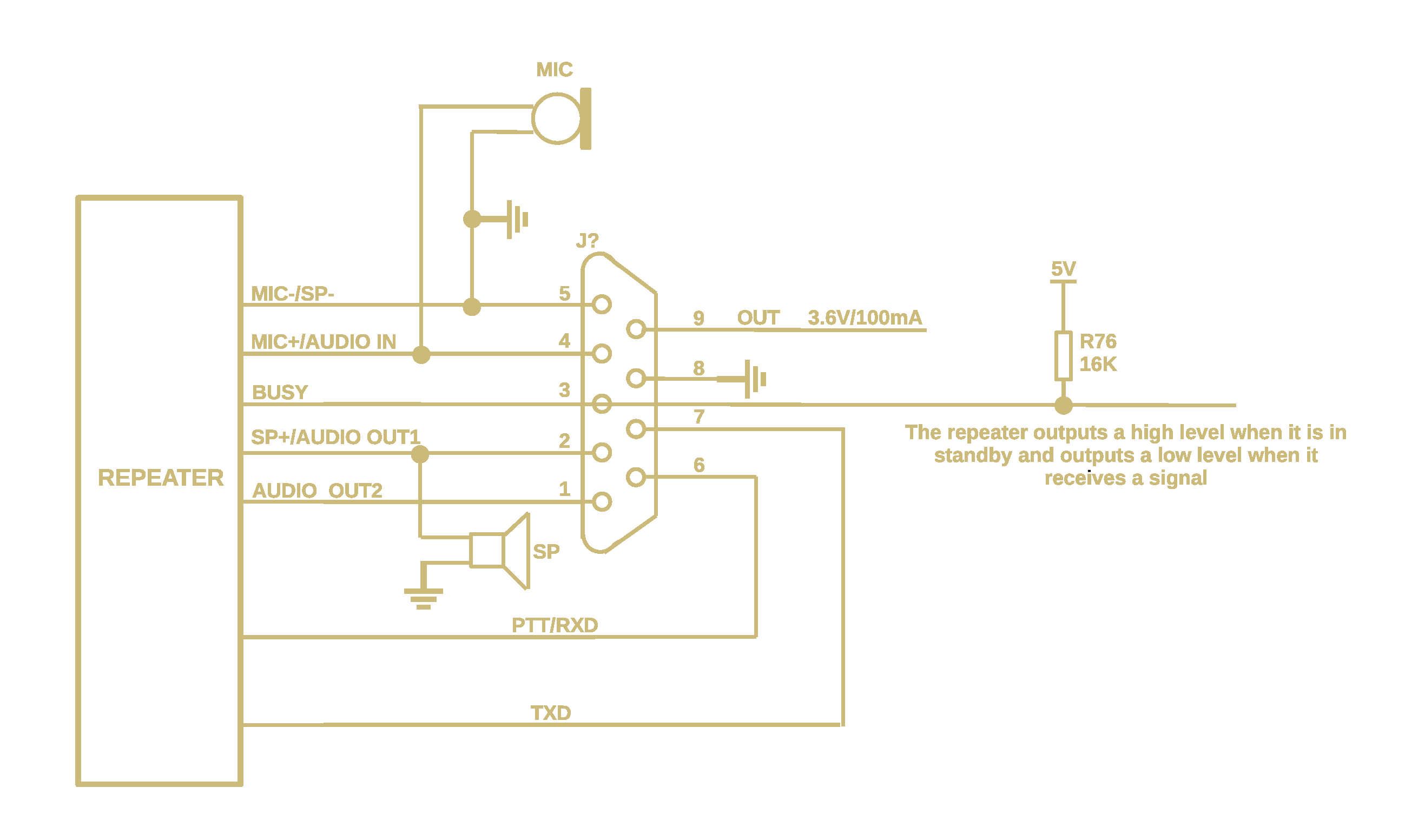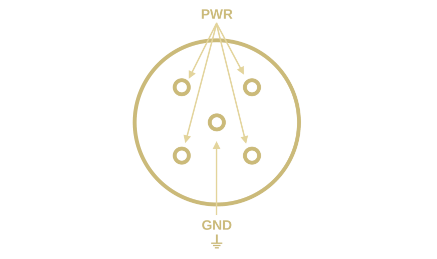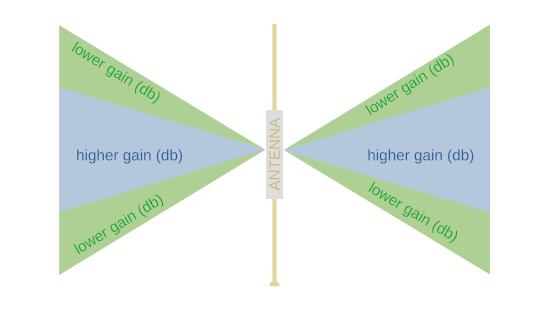Radio Communication System
Repeater & Handheld
The setup described here includes a weather resistant portable 25 watt repeater, waterproof GMRS handheld, and ID system for repeater identification.
The Retevis RT97L portable repeater described here can be ordered configured for GMRS frequencies or customized VHF/UFH frequencies (from the Retevis website).
GMRS, or General Mobile Radio Service, is a licensed radio service designed for short-distance two-way communication using FM UHF frequencies. It is commonly used for personal and recreational communication, as well as for business and professional purposes. GMRS radios operate on frequencies around 462 MHz and 467 MHz and can offer higher power and longer range compared to Family Radio Service (FRS) radios. To legally operate GMRS radios, a license from the Federal Communications Commission (FCC) is required.
Retevis RT97L Repeater
Portable & Weather Resistant
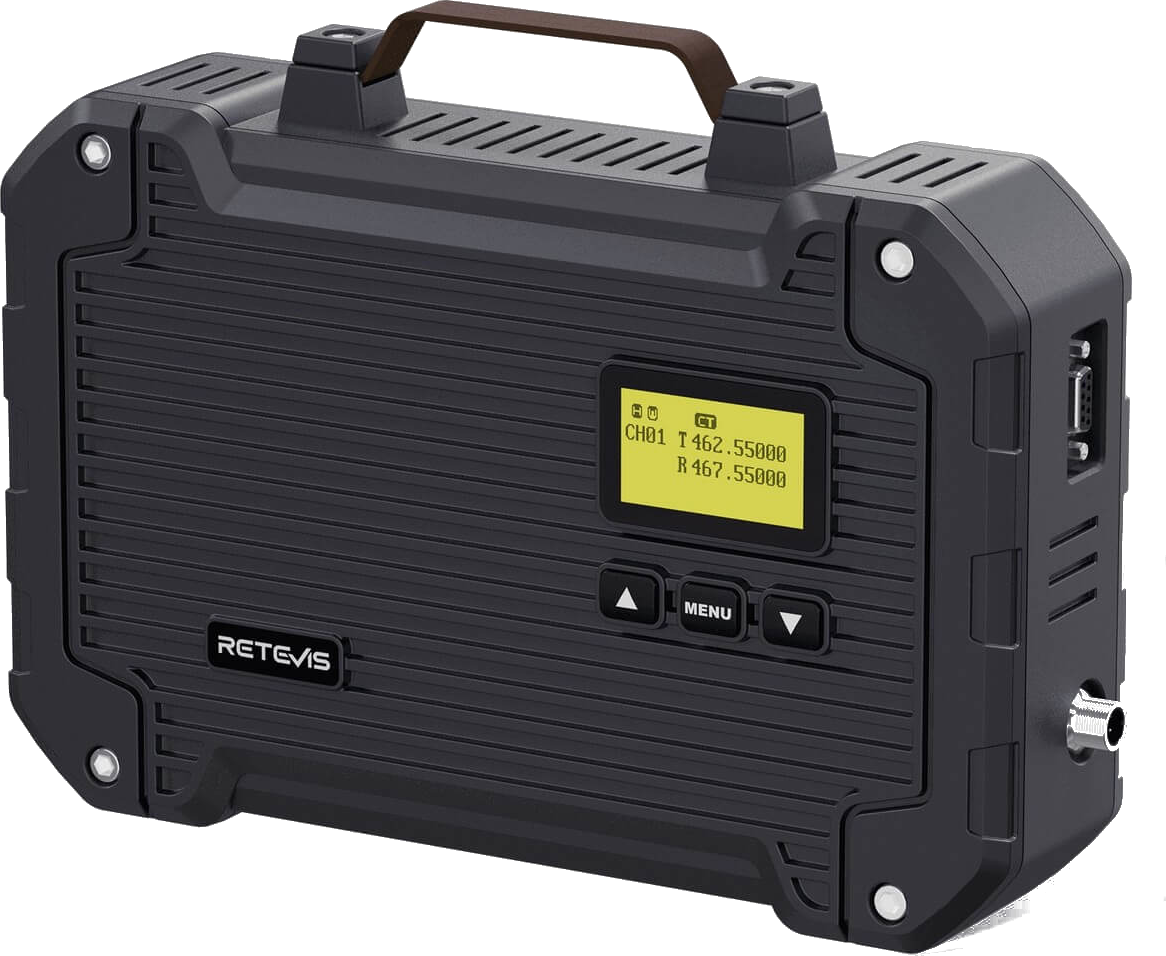
- Transmit Power: Factory 22-25W; After duplexer 15-22W
- Waterproof Rating: IP66
- Frequency Range: 462-467 MHz (GMRS) or custom
- Channel Spacing: 12.5 / 25 kHz Narrowband and Wideband
- Operating Voltage: DC 15V / 10A (AC 100-240V Input)
- Power Connector: M12 connector
- Operating Temperature: -30°C to +60°C (-22°F to 140°F)
- Antenna Impedance: 50 Ω
- Antenna Connector: SO-239 standard (N-type by request or mod)
- Data Connector: DB9
- Dimensions: 285 x 185 x 68 mm (11.3 x 7.3 x 2.7 in)
- Weight: 3.5 kg (7.7 lb)
- Modulation: FM
- Max Frequency Deviation: Wide ±5 kHz; Narrow ±2.5 kHz
- Receive Current: ≤ 180mA
- Transmit Current: ≤ 5.5A
- Transmitter Duty Cycle: 100%
Wouxun KG-S88G Plus GMRS Handheld
Waterproof - Repeater Capable - FM Radio

- Transmit Power: 5W maximum
- Waterproof Rating: IP67 (submersible)
- Frequency Rx: 400-470 MHz
- Frequency Tx: GMRS (wide & narrow band)
- Modulation: FM
- Receiver Type: superheterodyne
- Antenna connector type: SMA Male
- Power Connector: USB-C
- Battery: Li-Ion 2000 mAh
- Dimensions: 4.53 × 2.14 × 1.36 (in) / 115 × 54.3 × 34.6 (mm)
- Weight: 8.40 oz / 238 g
- Data Connector: USB-C (computer programmagble)
The idea of a wide band transmit capable radio is alluring. Handhelds like the VX-6R and mobile radios like the FT-818, marketed for amateur radio use, can be easily modified to transmit 'wide-band.' This is accomplished by some de-soldering or with software (see our posts on the VX-6R and FT-818). However, radio transmitters are designed to operate at certain frequencies. As a result, when transmitting on other frequencies transmit power is diminished. For example, the widebanded 5 W VX-6R will transmit a maximum of ~2 W on the GMRS frequencies. There are also legal considerations, as radios are supposed to be certified by, and comply with, regulatory standards; for example by the FCC in the USA.
Therefore, for optimum performance and legal operation, it is better to use a radio designed for your intended frequencies. That being said, wideband receiving is certainly desirable.
Of note, at the time of this writing, the Yaesu FT-818 was recently discontinued. The Yaesu FTX-1F is the company's new tri-band amateur radio. It also supports C4FM difital modulation.
Comet CA-712EFC Antenna
460-470 MHz for Base/Repeater
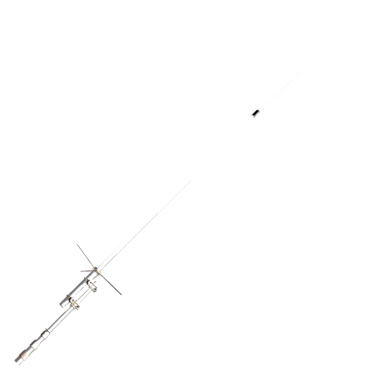
- SWR: 1.5:1 or less, 460-470 MHz
- Gain: 9 dBi
- Max Power: 200 watts
- Length: 10 ft 5 inches
- Weight: 2 lb 13 oz
- Connector: N-female
- Construction: 2 piece fiberglass
- Max wind speed: 112 mph
Similar to when considering radio transmitting capabilities, antenna tuing should be carefully considered during selection. For example, if you are not going to be using an antenna tuner, it might be worth choosing an antenna manfactured and tuned closely to your desired frequencies. This will minimize SWR. For example, for a GMRS application, a tri-band antenna that includes the 440-460 MHz range may perform less favorablely when operating at the 467 MHz repeater frequencies.
Antenna length makes a difference too. The length of an antenna is directly related to the wavelength of the signals it is designed to receive or emit. For efficient transmission or reception, an antenna should ideally be a certain proportion, typically half or a quarter, of the signal’s wavelength. As such, a longer antenna is necessary for producing low-frequency radio waves because the wavelength of a low-frequency wave is longer, and the antenna needs to be a certain proportion of the wavelength for efficient transmission or reception. Aside from those criteria, longer antennas offer enhanced signal strength, clearer reception, and likely better penetration through obstacles.
Antenna gain is a measure of how efficiently an antenna converts electrical power into radio waves in a specific direction. As such, gain does not add power to the transmission but rather indicates how focused the emission is a certain direction.
Gain is often expressed in decibels relative to isotropic (dBi), where an isotropic radiator is a theoretical point source that radiates equally in all directions. The gain value represents the ratio of the power radiated in the direction of peak radiation to that of an isotropic source.
Here is an example of a lower versus hight gain vertcal antenna:
RepeaterID Universal Edition
"The GMRS and HAM Auto-ID Solution"
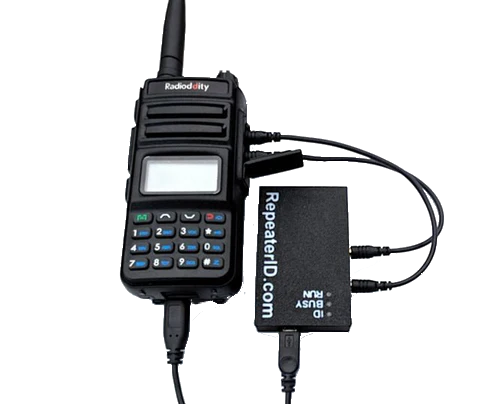
This unit connects to a host handheld that has been configured for a repeater and has a 2-pin Kenwood-style 3.5mm and 2.5mm audio jack where pins are spaced 12mm on center. It listens for activity on the repeater (handheld's audio out) and is able to key up PTT and transmit audio at required intervals.
This RepeaterID model is particularly useful for repeaters that are remote or have complicated or non-existent interfaces. It also has other practical applications, such as transmitting a periodic message or announcement.
